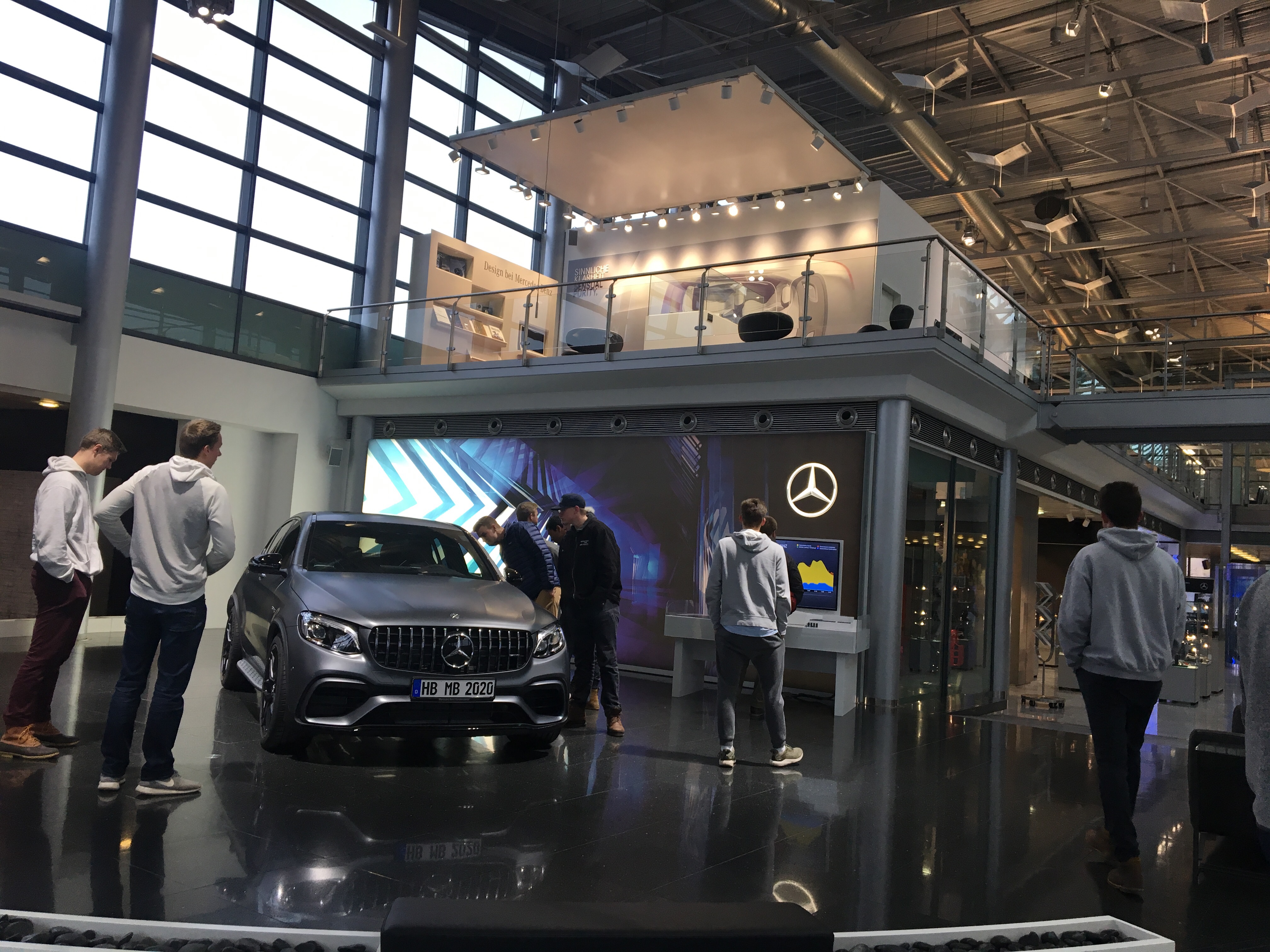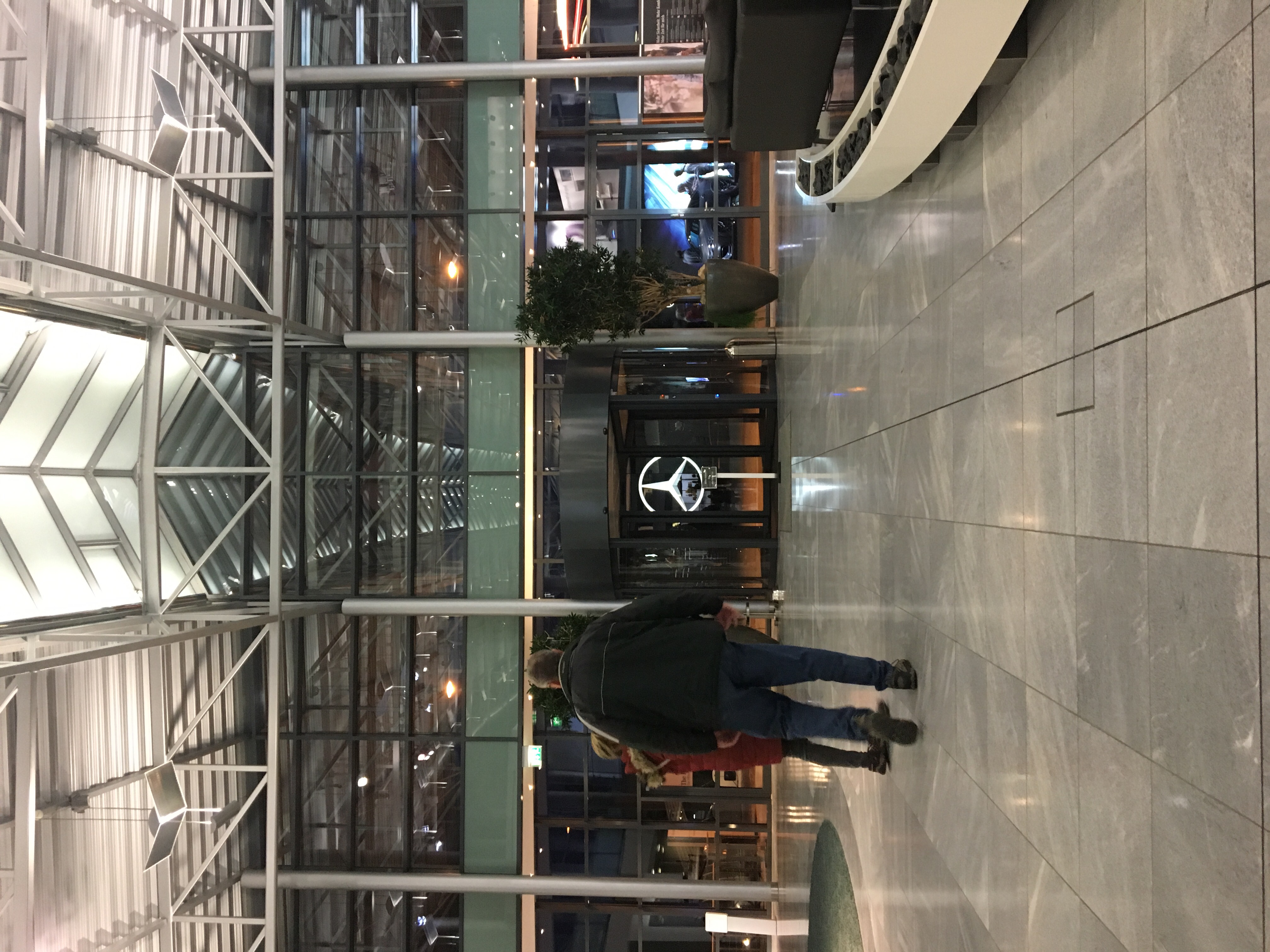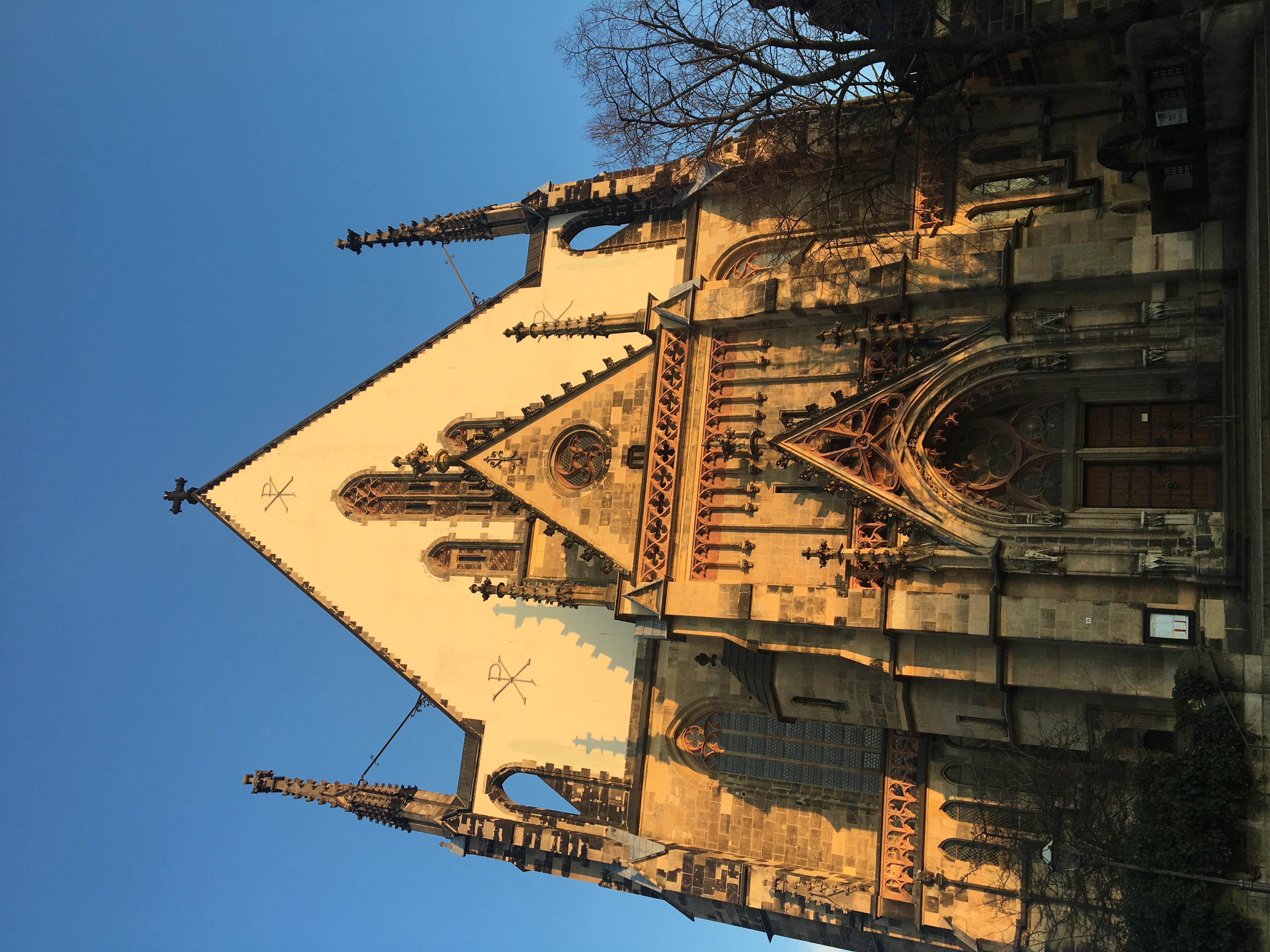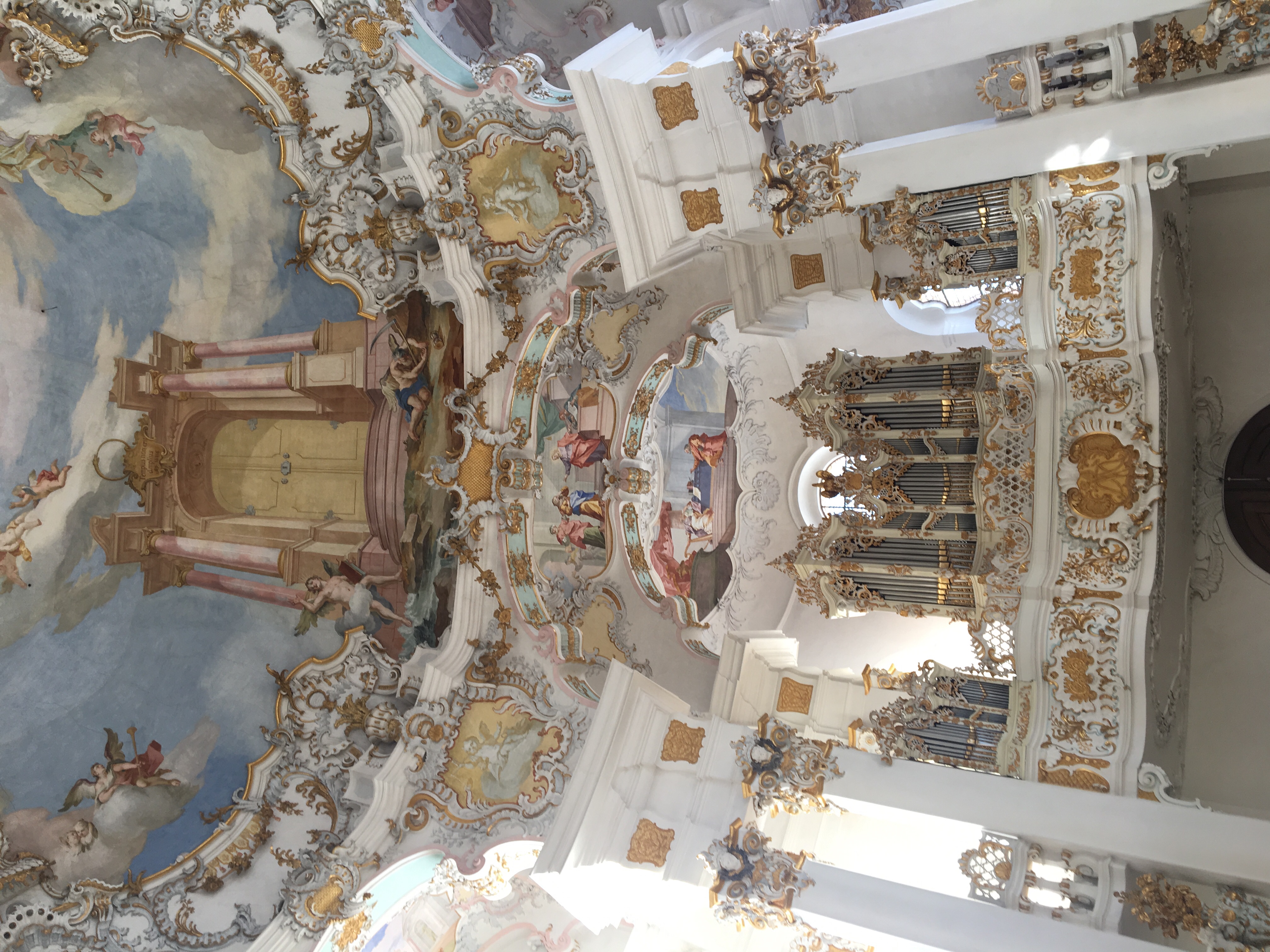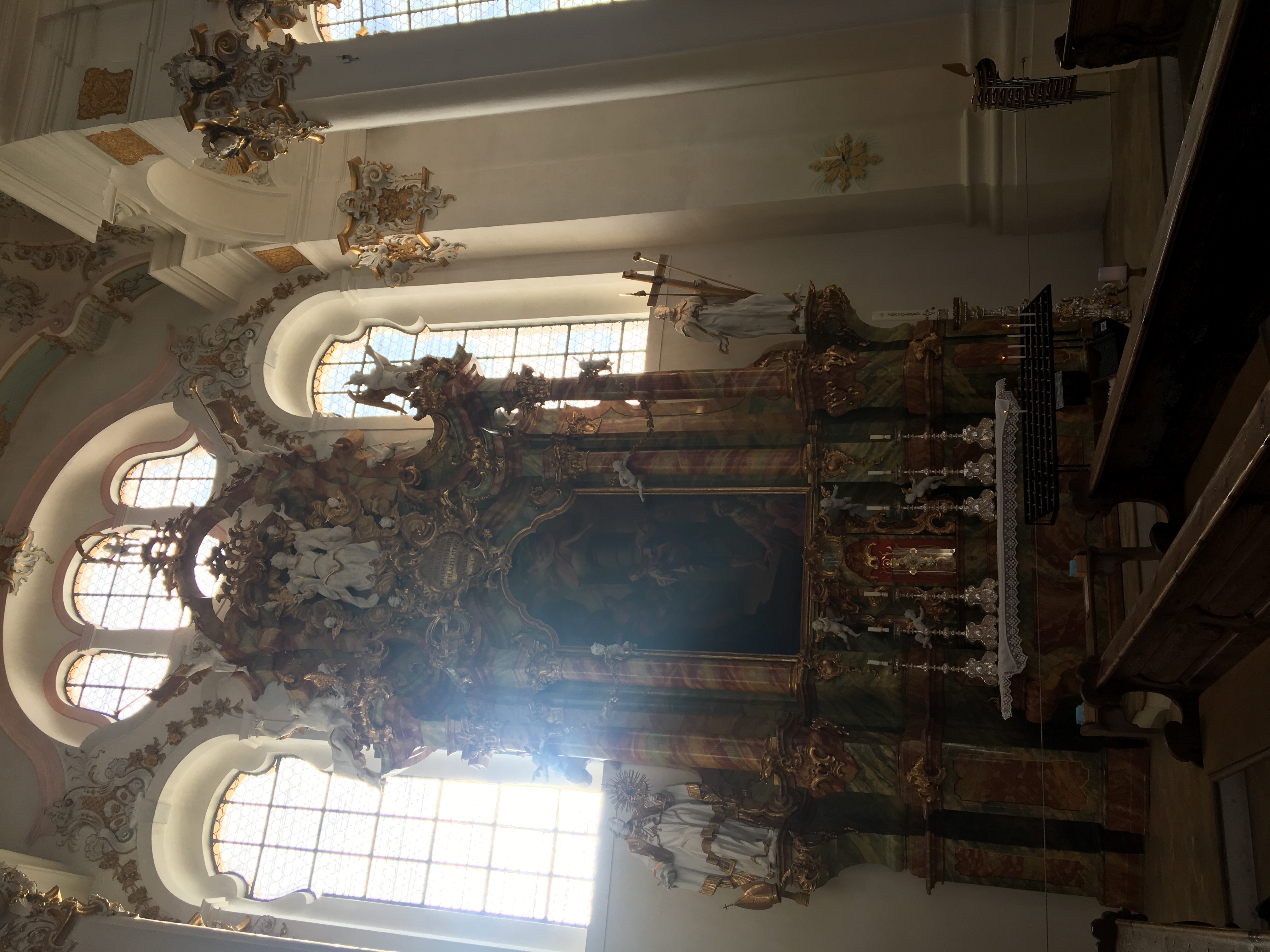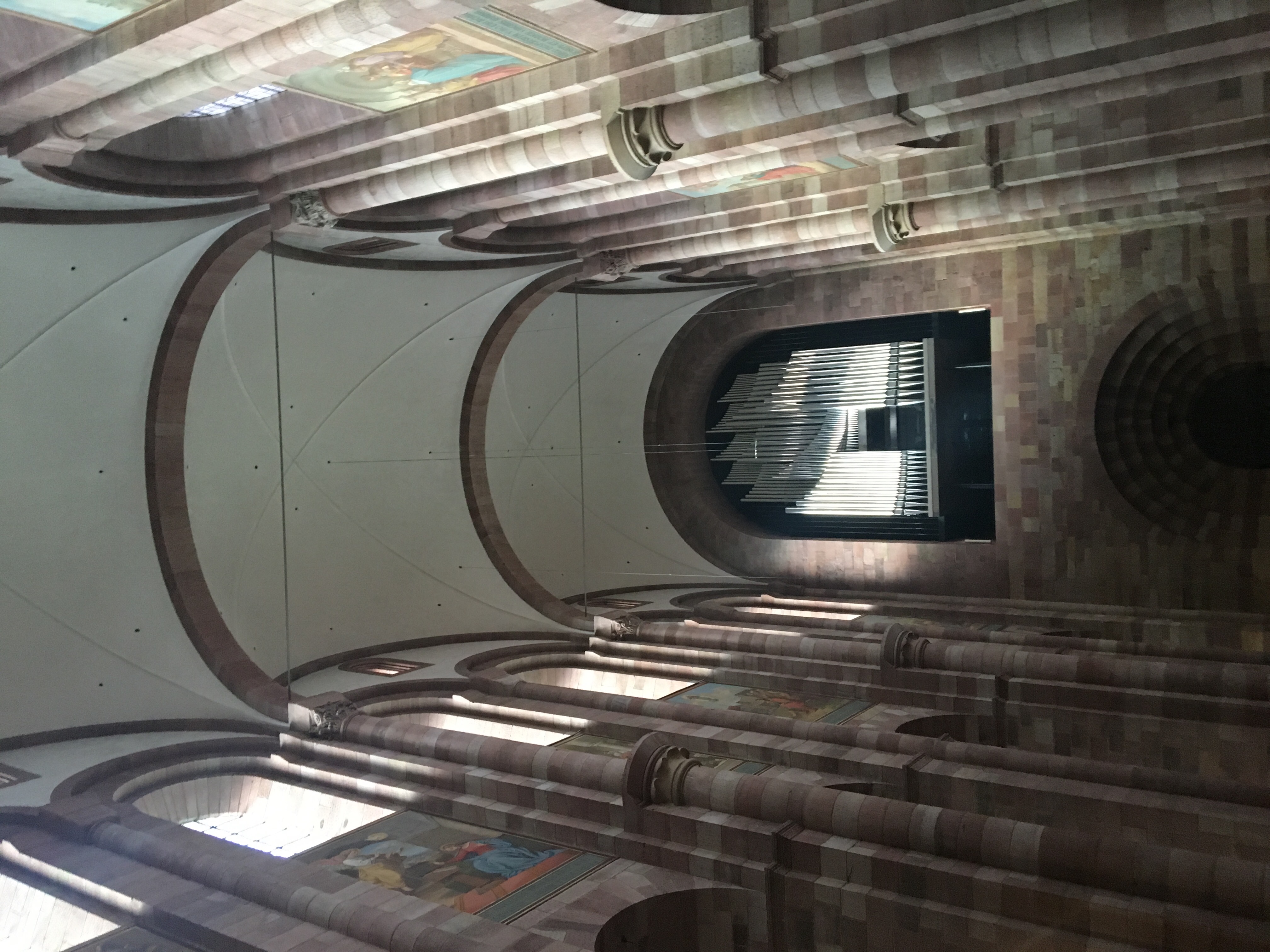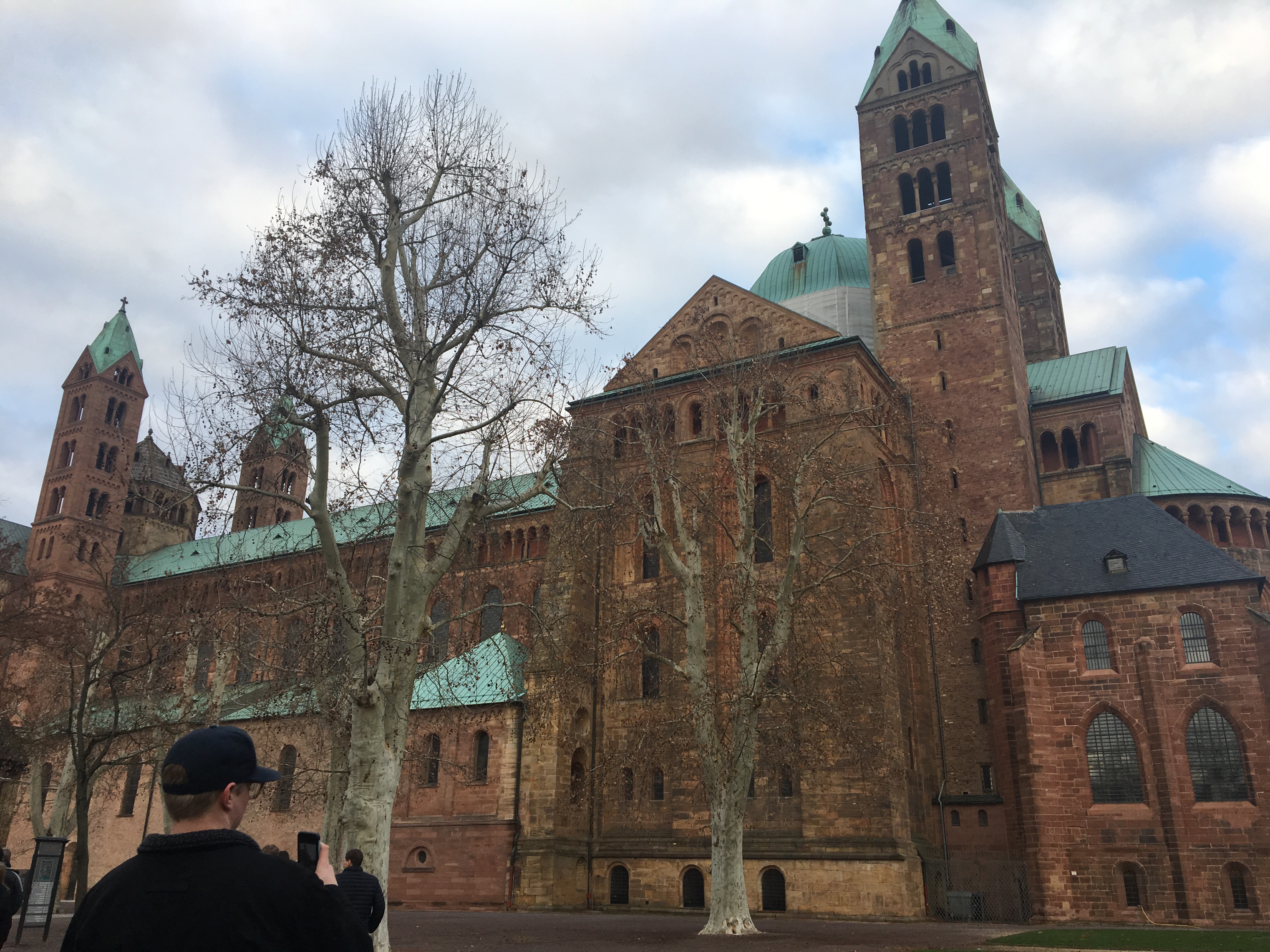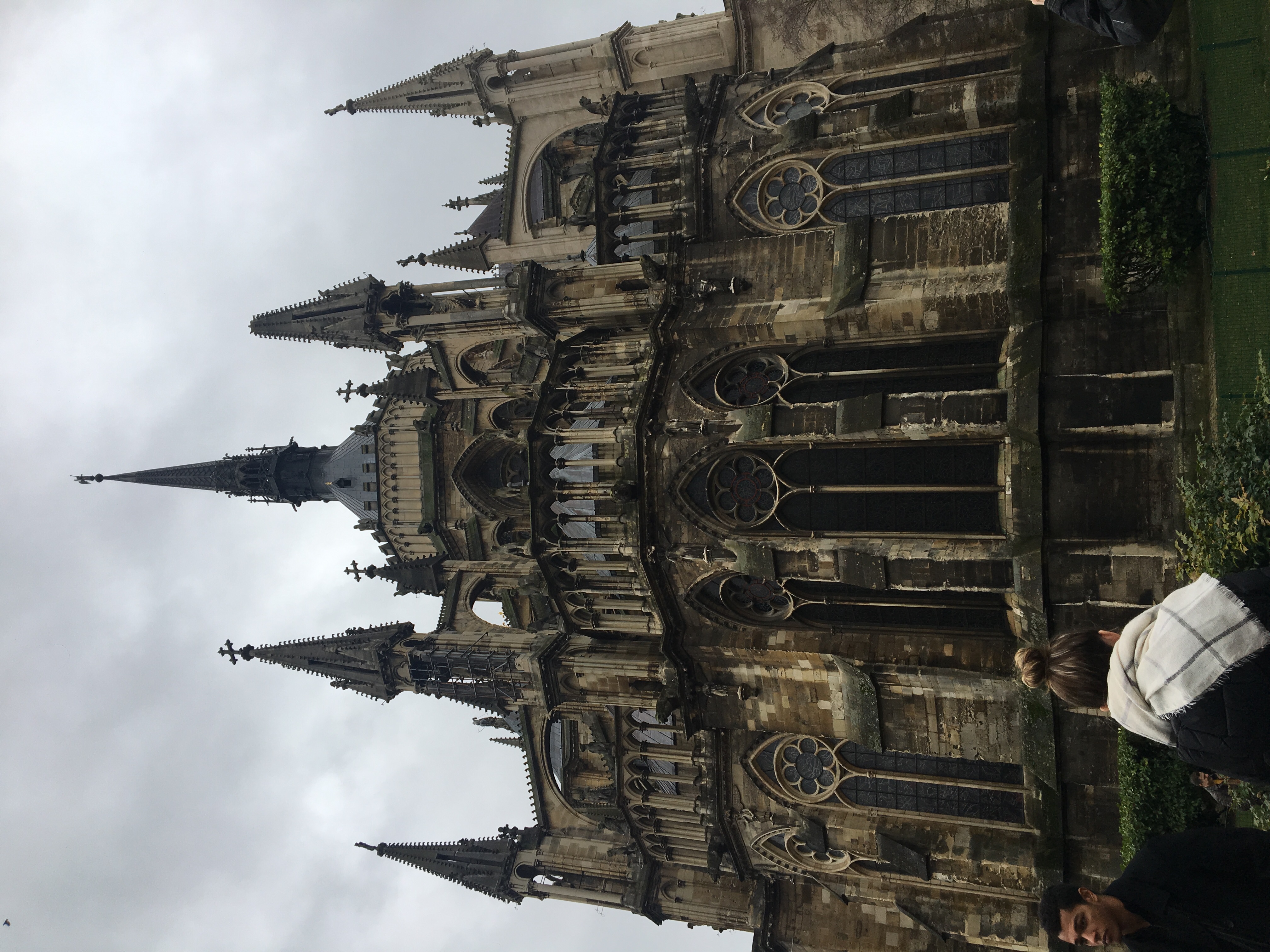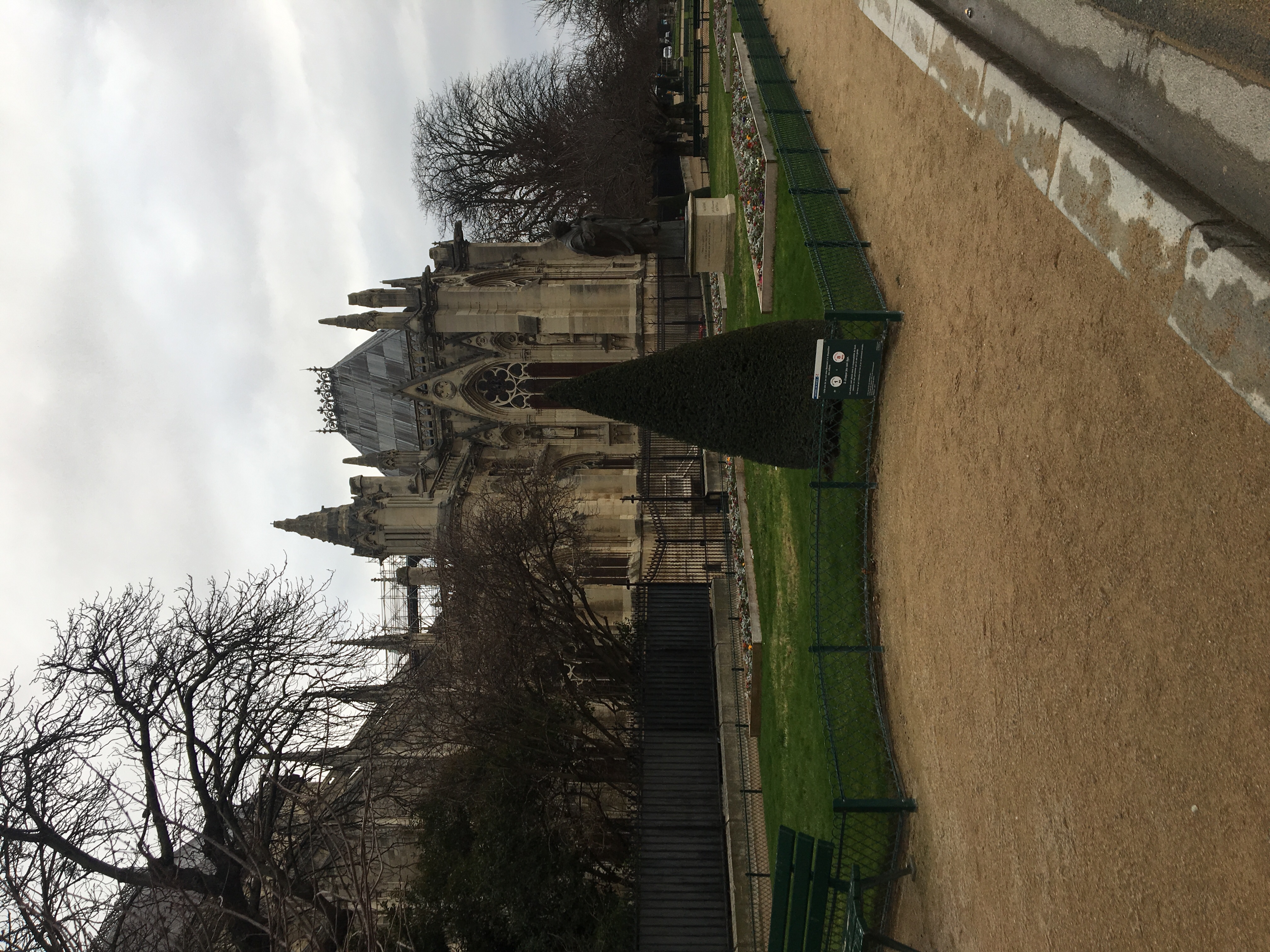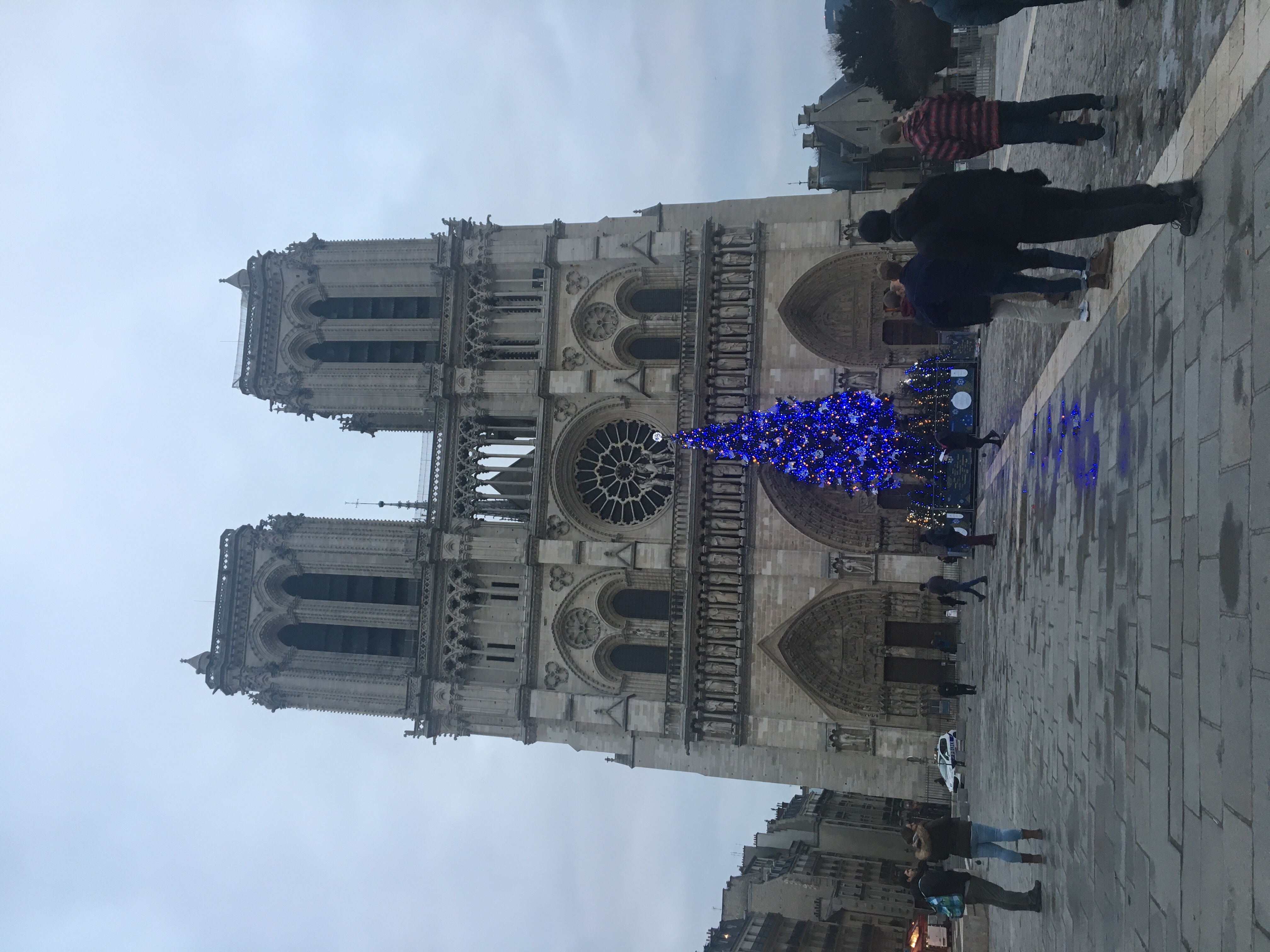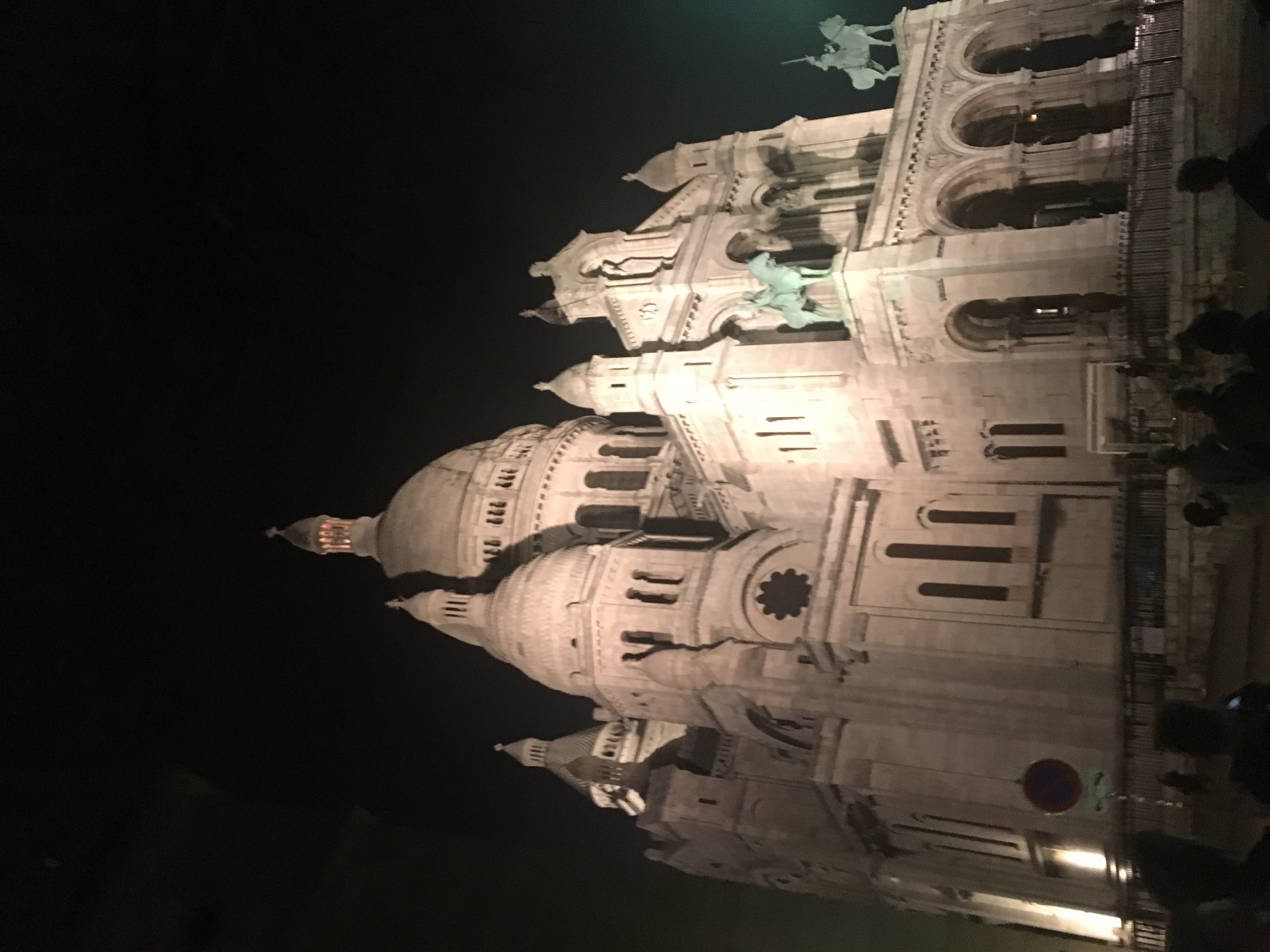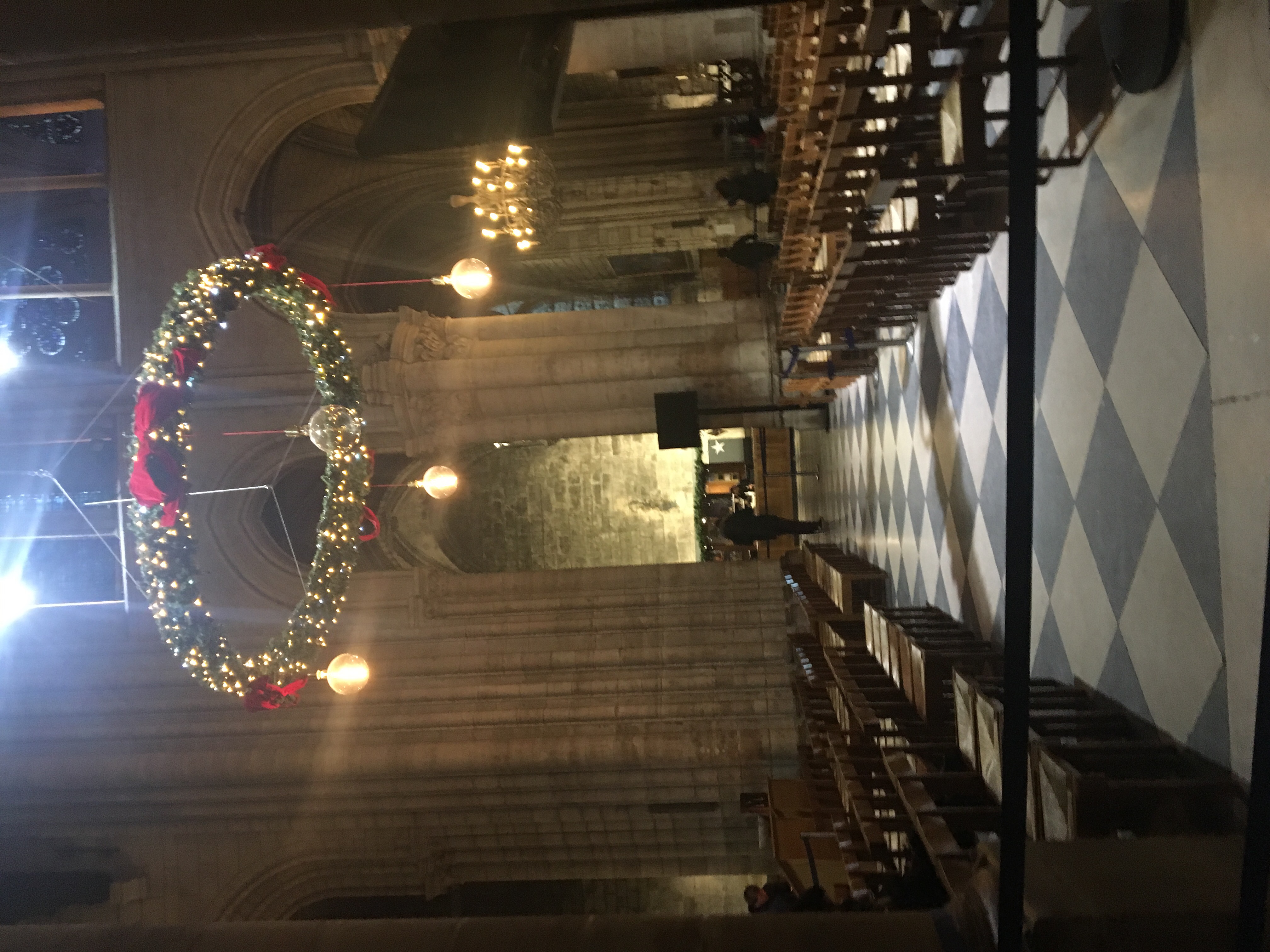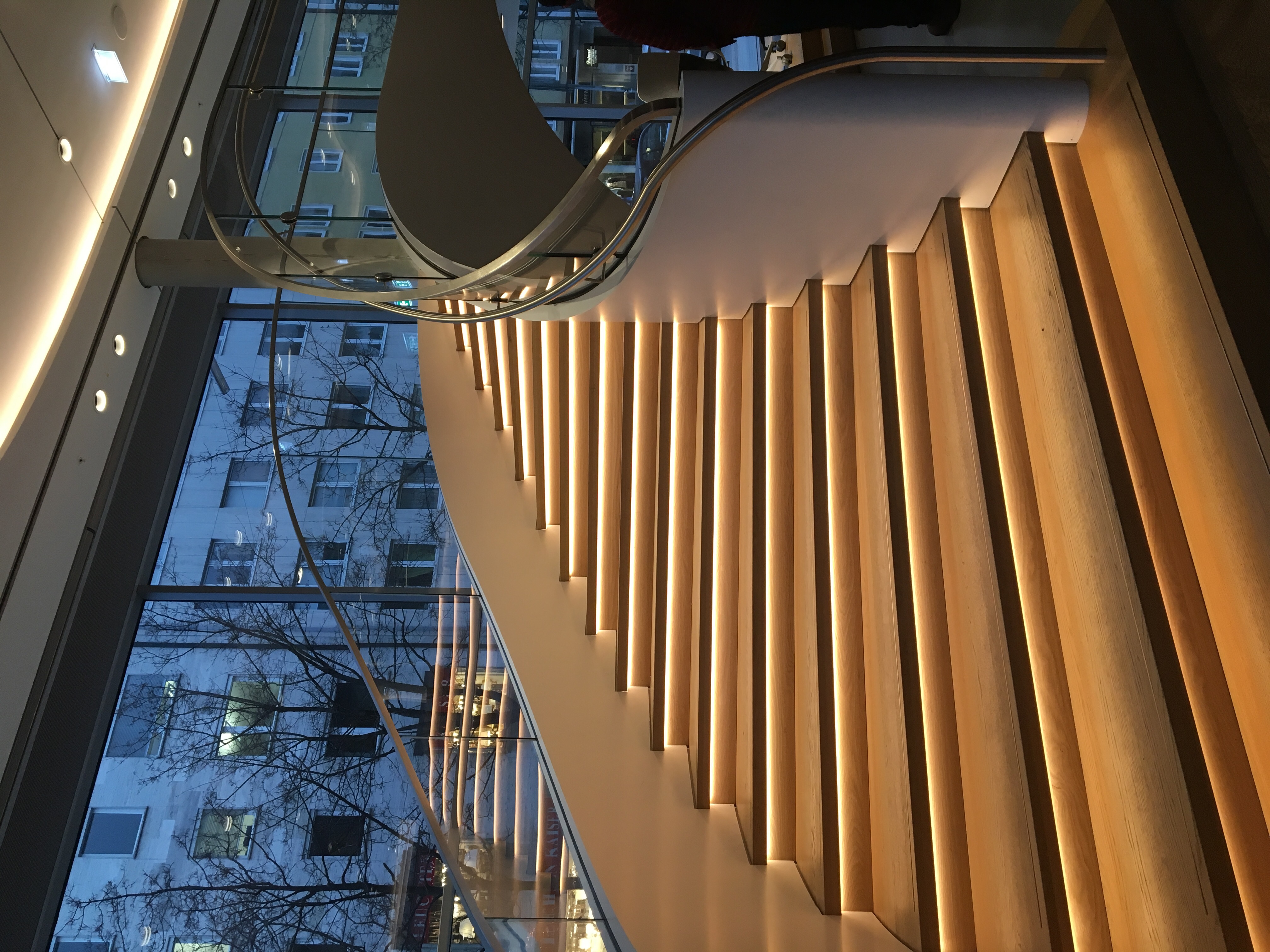Today we had the opportunity to visit the Mercedes Benz Bremen plant. It was an extremely stimulating experience which was only enhanced by our amicable guide Max. Despite only learning English 4 years ago he still gave us an informative tour. When we first arrived, we were led into a giant welcome center that displayed 3 different models of cars, unique seating areas, a merchandise shop (that had everything down to nail polish), a kid’s playground, a Virtual reality simulator and a mini cafe.
We were then handed headsets we could use to hear Max as we went along in the noisy environment. We had the opportunity to walk through the part of the factory that dealt with the body of the car so we got to see an actual assembly line of parts moving through via these giant machines and conveyor belts. In the second section of the tour we got to see the attachment of doors, windows and engines. Our group asked a few questions during this time but everything was “top secret”. We unfortunately weren’t allowed to take any pictures of the actual production.
It was so fascinating to see the combined efforts of 95% robotics and 5% human engineers working on the cars. It was really clear that the workers were specialists in the field and Max pointed out that within their 8 hour shift they switch duties so as to not get bored.
I’ve always been a fan of the European car company so I’m so glad I got to see it first hand today.

